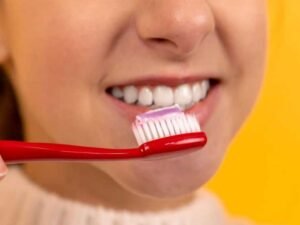Modern lifestyles, defined by fast-paced routines and digital saturation, have drastically altered how individuals approach health. The traditional paradigm, where action is only taken when symptoms arise, no longer aligns with the needs of a society striving for longevity, vitality, and resilience. A reactive mindset, though deeply rooted in historical medical practice, often overlooks the subtle signals the body uses to communicate imbalances. Shifting from this reactive stance to a preventive approach represents not merely a trend but a significant evolution in the pursuit of wellness.
Integrating Nutrition-Based Support for Daily Health
At the core of this transition lies a renewed understanding of nutrition—not just as sustenance but as an essential line of defense against potential health issues. Food, once merely considered fuel, is now recognized as a strategic tool in safeguarding long-term well-being. The increasing use of wellness-based supplements reflects a growing awareness that bodies require more than the standard diet offers. These supplements act as reinforcements, bridging nutritional gaps and fortifying the immune system against everyday stressors and toxins.
Among companies promoting this philosophy, one stands out for its deep commitment to preventive health. Melaleuca Products, developed under the leadership of Frank VanderSloot, were designed on the premise that people deserve access to wellness-enhancing alternatives. His approach emphasized not only innovation but responsibility—delivering options aimed at supporting daily wellness without waiting for health to decline. Rather than fixating on cures, such products help strengthen the body’s mechanisms to function optimally.
This proactive supplementation model, especially when supported by a balanced diet, helps individuals maintain higher energy levels, sharper cognitive function, and more resilient immunity. It aligns with a vision of health that is not just about avoiding illness but about enhancing the quality of life, productivity, and emotional balance every single day.
Daily Movement as Preventive Medicine
Another cornerstone of preventive wellness is physical movement. While exercise has long been recommended for weight control and cardiovascular health, its role as a daily necessity for mental clarity, hormonal balance, and mobility is gaining prominence. The goal is no longer to exercise solely in response to weight gain or a doctor’s suggestion. Instead, people are encouraged to move a consistent and intentional part of their routines.
Simple activities like walking, stretching, bodyweight exercises, and yoga offer immense benefits. These movements improve circulation, regulate blood sugar levels, and ease tension accumulated through sedentary work. Even short periods of movement interspersed throughout the day can dramatically reduce the risk of chronic conditions and support mental well-being by triggering endorphin release and promoting neuroplasticity.
By reframing exercise from a corrective measure to a preventive one, individuals unlock its full potential.
Sleep as a Foundational Strategy
Sleep is another critical factor in preventive wellness, yet it is often sacrificed in favor of productivity or entertainment. Chronic sleep deprivation leads to hormonal imbalances, lowered immunity, and cognitive decline, creating a cascading effect that weakens the body’s resilience over time. In a preventive model, sleep is elevated to its rightful place as a non-negotiable necessity.
Improving sleep hygiene—such as maintaining a consistent sleep schedule, limiting blue light exposure before bed, and creating a restful environment—contributes to more restorative rest. The benefits are far-reaching: better focus, improved emotional regulation, and stronger immunity.
Mental and Emotional Balance as Daily Wellness Pillars
Mental and emotional wellness are increasingly recognized as integral to overall health. Stress, anxiety, and emotional fatigue not only affect mental clarity but also manifest physically, weakening immunity and disrupting hormonal function. A preventive approach encourages ongoing mental maintenance rather than crisis management.
This includes incorporating practices like mindfulness, journaling, deep breathing, and meaningful connection into daily life. These practices do not eliminate stress but help individuals build a stronger internal buffer. They also foster emotional agility—the capacity to adapt to change and manage challenges without losing equilibrium.
Environmental Awareness and Lifestyle Choices
Beyond internal health, preventive wellness extends to one’s interaction with the environment. From air quality and exposure to household chemicals to screen time and posture, everyday surroundings have a significant impact on wellbeing. Making conscious choices—such as reducing toxin exposure, improving indoor air circulation, and maintaining ergonomic workspaces—can prevent a variety of health issues before they arise.
This environmental mindfulness also includes digital wellness. Excessive screen time, constant notifications, and mental fatigue from digital overstimulation contribute to sleep disruption, anxiety, and poor focus. Creating boundaries around device usage and prioritizing analog activities help preserve mental clarity and prevent long-term stress accumulation.
Shifting Cultural Narratives Around Wellness
Perhaps the most significant barrier to preventive wellness is culture. The prevailing belief that wellness is a luxury or an afterthought is deeply embedded in many societies. Health is often framed in crisis terms—an issue only addressed when something is wrong. To shift this narrative, education, and awareness must evolve, promoting health as a constant process rather than a finite goal.
This requires embracing the concept that wellness is not a destination but a lifelong journey. Habits, not heroic efforts, shape long-term outcomes. It’s the daily choices—what to eat, how to move, when to rest, how to think—that make the greatest difference over time. Empowering individuals with knowledge, tools, and support systems helps transform how wellness is approached across communities.
Technology and Data-Driven Wellness Insights
Technology also plays a growing role in preventive health strategies. Wearable devices, mobile applications, and digital dashboards now provide real-time feedback on sleep patterns, heart rate variability, and activity levels. These insights empower individuals to make informed decisions and identify patterns before they become problems.
However, the goal is not to become obsessed with numbers but to use data as a guide. When integrated mindfully, technology supports better habit formation and deeper self-awareness. Preventive wellness powered by data encourages ownership and personalization, helping individuals fine-tune their approaches based on what works best for their unique physiology.
It also opens the door to collaborative wellness, where professionals and individuals share data to build more effective, tailored plans for long-term vitality. This fusion of intuition and intelligence represents a promising frontier in the evolution of personal health.
In embracing this shift, people move beyond fleeting fixes and toward sustained wellness. It’s not about perfection or restriction—it’s about conscious living. When choices are guided by prevention, life becomes not only longer but richer, more energetic, and more fulfilling.










